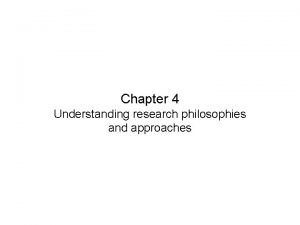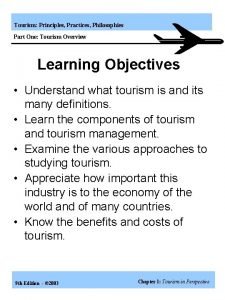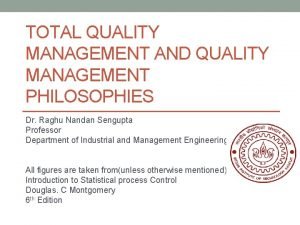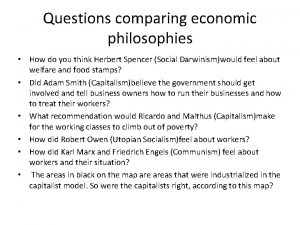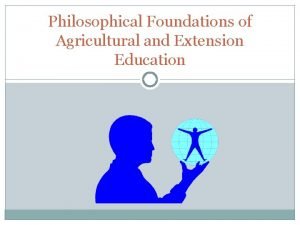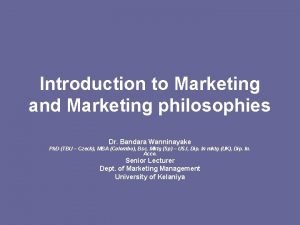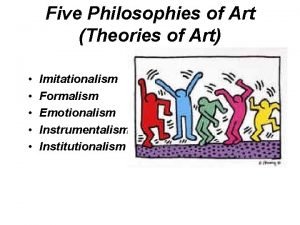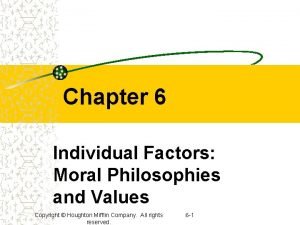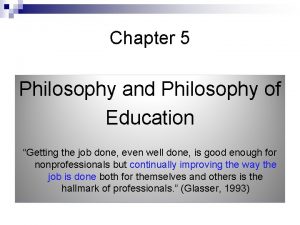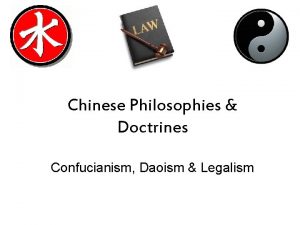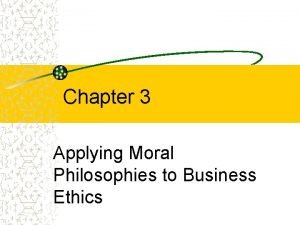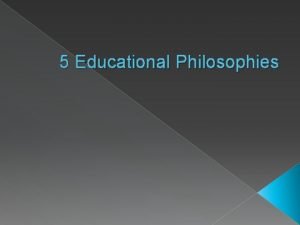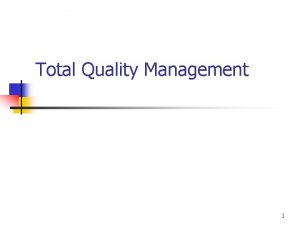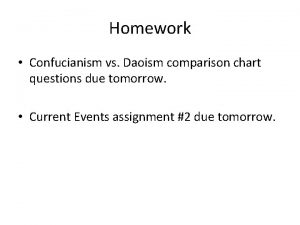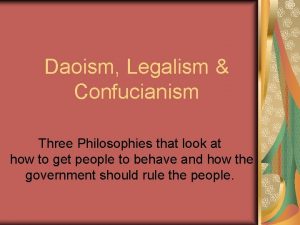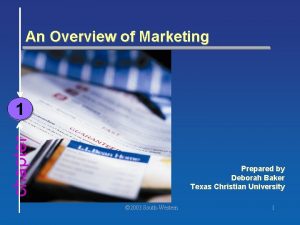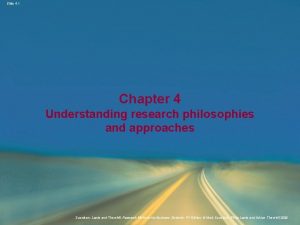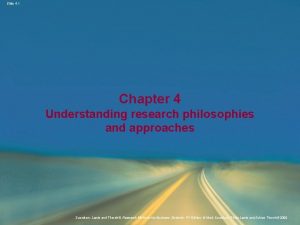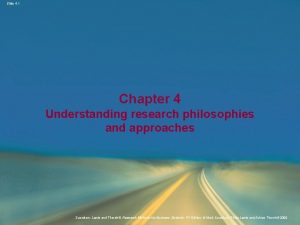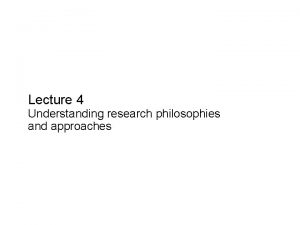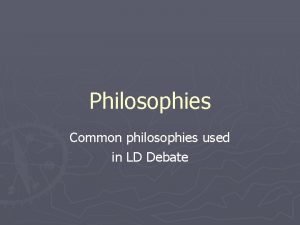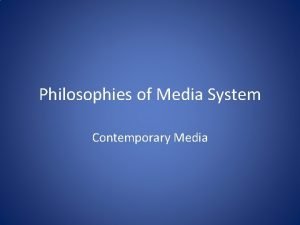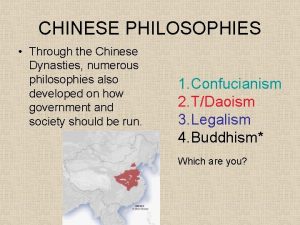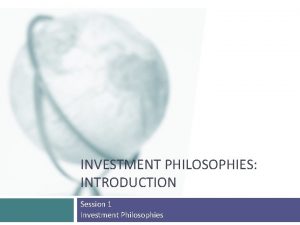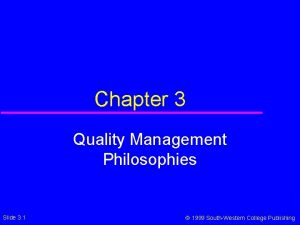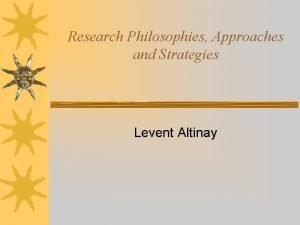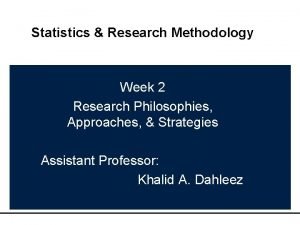Slide 4 1 Chapter 4 Understanding research philosophies






















- Slides: 22

Slide 4. 1 Chapter 4 Understanding research philosophies and approaches Saunders, Lewis and Thornhill, Research Methods for Business Students , 5 th Edition, © Mark Saunders, Philip Lewis and Adrian Thornhill 2009

Slide 4. 2 Understanding research philosophies and approaches • By end of this chapter you should be able to: • Define the key terms ontology, epistemology and explain their relevance to business research; • Explain the relevance for business research of philosophical perspectives such as positivism, pragmatism, and interpretivism; • Distinguish between main research approaches; deductive and inductive; Saunders, Lewis and Thornhill, Research Methods for Business Students , 5 th Edition, © Mark Saunders, Philip Lewis and Adrian Thornhill 2009

Slide 4. 3 Underlying issues of data collection and analysis The research ‘onion’ Saunders et al, (2008) Figure 4. 1 The research ‘onion’ Saunders, Lewis and Thornhill, Research Methods for Business Students , 5 th Edition, © Mark Saunders, Philip Lewis and Adrian Thornhill 2009

Slide 4. 4 Understanding your research philosophy ‘Research philosophy is an over-arching term relating to the development of knowledge and the nature of that knowledge’ Adapted from Saunders et al, (2009) Saunders, Lewis and Thornhill, Research Methods for Business Students , 5 th Edition, © Mark Saunders, Philip Lewis and Adrian Thornhill 2009

Slide 4. 5 Understanding your research philosophy • Two major research Philosophy: – Ontology and – Epistemology Saunders, Lewis and Thornhill, Research Methods for Business Students , 5 th Edition, © Mark Saunders, Philip Lewis and Adrian Thornhill 2009

Slide 4. 6 Understanding your research philosophy Ontology • It is concerned with nature of reality. This raise the questions of the assumptions researchers have about the way the world operates and commitment held to particular views. The two aspects of ontology we describe here will both have their devotees among business and management researchers , In addition, both are likely to be accepted as producing valid knowledge by many researchers Saunders, Lewis and Thornhill, Research Methods for Business Students , 5 th Edition, © Mark Saunders, Philip Lewis and Adrian Thornhill 2009

Slide 4. 7 Ontology • Blaikie (1993) describes the root definition of ontology as ‘the science or study of being’ and develops this description for the social sciences to encompass ‘claims about what exists, what it looks like, what units make it up and how these units interact with each other’. In short, ontology describes our view (whether claims or assumptions) on the nature of reality, and specifically, is this an objective reality that really exists, or only a subjective reality, created in our minds. Saunders, Lewis and Thornhill, Research Methods for Business Students , 5 th Edition, © Mark Saunders, Philip Lewis and Adrian Thornhill 2009

Slide 4. 8 Ontology • The first aspect of ontology we discuss is objectivism. This portrays the position that social entities exist in reality external to social actors concerned with their existence. • The second aspect, subjectivism holds that social phenomena are created from the perceptions and consequent actions of those social actors concerned with their existence • For example, a workplace report – asking one to question whether it describes what is really going on, or only what the author thinks is going on. • Saunders, Lewis and Thornhill, Research Methods for Business Students , 5 th Edition, © Mark Saunders, Philip Lewis and Adrian Thornhill 2009

Slide 4. 9 Epistemology • It concerns what constitutes acceptable knowledge in a field of study. • Closely coupled with ontology and its consideration of what constitutes reality, epistemology considers views about the most appropriate ways of enquiring into the nature of the world (Easterby-Smith, Thorpe and Jackson, 2008) and ‘what is knowledge and what are the sources and limits of knowledge’ (Eriksson and Kovalainen, 2008). Saunders, Lewis and Thornhill, Research Methods for Business Students , 5 th Edition, © Mark Saunders, Philip Lewis and Adrian Thornhill 2009

Slide 4. 10 Epistemology • Blaikie (1993) describes epistemology as ‘the theory or science of the method or grounds of knowledge’ expanding this into a set of claims or assumptions about the ways in which it is possible to gain knowledge of reality, how what exists may be known, what can be known, and what criteria must be satisfied in order to be described as knowledge. Chia (2002) describes epistemology as ‘how and what it is possible to know’ and the need to reflect on methods and standards through which reliable and verifiable knowledge is produced. Saunders, Lewis and Thornhill, Research Methods for Business Students , 5 th Edition, © Mark Saunders, Philip Lewis and Adrian Thornhill 2009

Slide 4. 11 Epistemology • Hatch and Cunliffe (2006) summarise epistemology as ‘knowing how you can know’ and expand this by asking how is knowledge generated, what criteria discriminate good knowledge from bad knowledge, and how should reality be represented or described. They go on to highlight the inter-dependent relationship between epistemology and ontology, and how one both informs, and depends upon, the other. Saunders, Lewis and Thornhill, Research Methods for Business Students , 5 th Edition, © Mark Saunders, Philip Lewis and Adrian Thornhill 2009

Slide 4. 12 Understanding your research philosophy Aspects of philosophy • Positivism - the stance of the natural scientist • Interpretivism – researchers as ‘social actors’ • Pragmitism Saunders, Lewis and Thornhill, Research Methods for Business Students , 5 th Edition, © Mark Saunders, Philip Lewis and Adrian Thornhill 2009

Slide 4. 13 Positivism • Positivism can be defined as “research approaches that employ empirical methods, make extensive use of quantitative analysis, or develop logical calculi to build formal explanatory theory” Saunders, Lewis and Thornhill, Research Methods for Business Students , 5 th Edition, © Mark Saunders, Philip Lewis and Adrian Thornhill 2009

Slide 4. 14 Interpretivism • Interpretivisim advocates it is necessary for the researcher to understand differences between humans in our role as social actors. This emphasizes the differences between conducting research among people rather than objects such as trucks and computers. Saunders, Lewis and Thornhill, Research Methods for Business Students , 5 th Edition, © Mark Saunders, Philip Lewis and Adrian Thornhill 2009

Slide 4. 15 Interpretivisim • Interpretive research is concerned with the meanings that people attach to norms, rules, and values that regulate their interactions. Care is taken not to impose a previous understanding of norms, rules, and values on others but rather to understand their beliefs and actions from their point of view. The focus is not only on what they tell us directly about the reasons for their beliefs and actions but also on the social practices that underlie them. Social practice gives meaning to social action Saunders, Lewis and Thornhill, Research Methods for Business Students , 5 th Edition, © Mark Saunders, Philip Lewis and Adrian Thornhill 2009

Slide 4. 16 Pragmatism • Pragmatism holds that the most important determinant of the epistemology, ontology, axiology adopted is the research question. • Pragmatist recognizes that there are many different ways of interpreting the world and undertaking research, that no single point of view can ever give us entire picture and that there may be multiple realities. Saunders, Lewis and Thornhill, Research Methods for Business Students , 5 th Edition, © Mark Saunders, Philip Lewis and Adrian Thornhill 2009

Slide 4. 17 Research Approaches • Deduction: if your research starts with theory, often developed based on literature review, and you design a research strategy to test theory. • Induction: If your research starts by collecting data to explore a phenomenon and you generate or build theory (conceptual framework). • Abduction: You are collecting data to explore a phenomenon, identify themes, and explain patterns to generate a new or modify an exiting theory which you subsequently test through additional data collection. Saunders, Lewis and Thornhill, Research Methods for Business Students , 5 th Edition, © Mark Saunders, Philip Lewis and Adrian Thornhill 2009

Slide 4. 18 Research Approaches Deduction 5 sequential stages of testing theory • • • Deducing a hypothesis Expressing the hypothesis operationally Testing the operational hypothesis Examining the specific outcome of the enquiry Modifying theory (if necessary) Adapted from Robson (2002) Saunders, Lewis and Thornhill, Research Methods for Business Students , 5 th Edition, © Mark Saunders, Philip Lewis and Adrian Thornhill 2009

Slide 4. 19 Research Approaches Characteristics of Deduction • Explaining causal relationships between variables • Establishing controls for testing hypotheses • Independence of the researcher • Concepts operationalised for quantative measurement • Generalisation Saunders, Lewis and Thornhill, Research Methods for Business Students , 5 th Edition, © Mark Saunders, Philip Lewis and Adrian Thornhill 2009

Slide 4. 20 Research Approaches (3) Induction Building theory by – • Understanding the way human build their world • Permitting alternative explanations of what’s going on • Being concerned with the context of events • Using more qualitative data • Using a variety of data collection methods Saunders, Lewis and Thornhill, Research Methods for Business Students , 5 th Edition, © Mark Saunders, Philip Lewis and Adrian Thornhill 2009

Slide 4. 21 Choosing your research approach The right choice of approach helps you to • Make a more informed decision about the research design • Think about which strategies will work for your research topic • Adapt your design to cater for any constraints Adapted from Easterby-Smith et al. (2008) Saunders, Lewis and Thornhill, Research Methods for Business Students , 5 th Edition, © Mark Saunders, Philip Lewis and Adrian Thornhill 2009

Slide 4. 22 Combining research approaches Things worth considering • The nature of the research topic • The time available • The extent of risk • The research audience – managers and markers Saunders, Lewis and Thornhill, Research Methods for Business Students , 5 th Edition, © Mark Saunders, Philip Lewis and Adrian Thornhill 2009
 What is heel and toe polka
What is heel and toe polka Research philosophies and approaches
Research philosophies and approaches Tourism: principles, practices, philosophies
Tourism: principles, practices, philosophies Quality management philosophies
Quality management philosophies Comparing economic philosophies worksheet answers
Comparing economic philosophies worksheet answers Philosophy of extension education
Philosophy of extension education Www.damodaran
Www.damodaran Aswath damodaran portfolio
Aswath damodaran portfolio Marketing's role
Marketing's role Emotionalism theory of art
Emotionalism theory of art 6 life lessons you can learn from an ant.
6 life lessons you can learn from an ant. Individual factors moral philosophies and values
Individual factors moral philosophies and values Essentialism in the classroom
Essentialism in the classroom Chinese philosophies comparison chart
Chinese philosophies comparison chart Applying moral philosophies to business ethics
Applying moral philosophies to business ethics 5 educational philosophies
5 educational philosophies Chapter 7 grendel summary
Chapter 7 grendel summary What is tqm? *
What is tqm? * Chinese philosophies comparison chart
Chinese philosophies comparison chart Legalism teachings
Legalism teachings Four marketing management philosophies
Four marketing management philosophies Factoring slide and divide method
Factoring slide and divide method Understanding qualitative research
Understanding qualitative research

